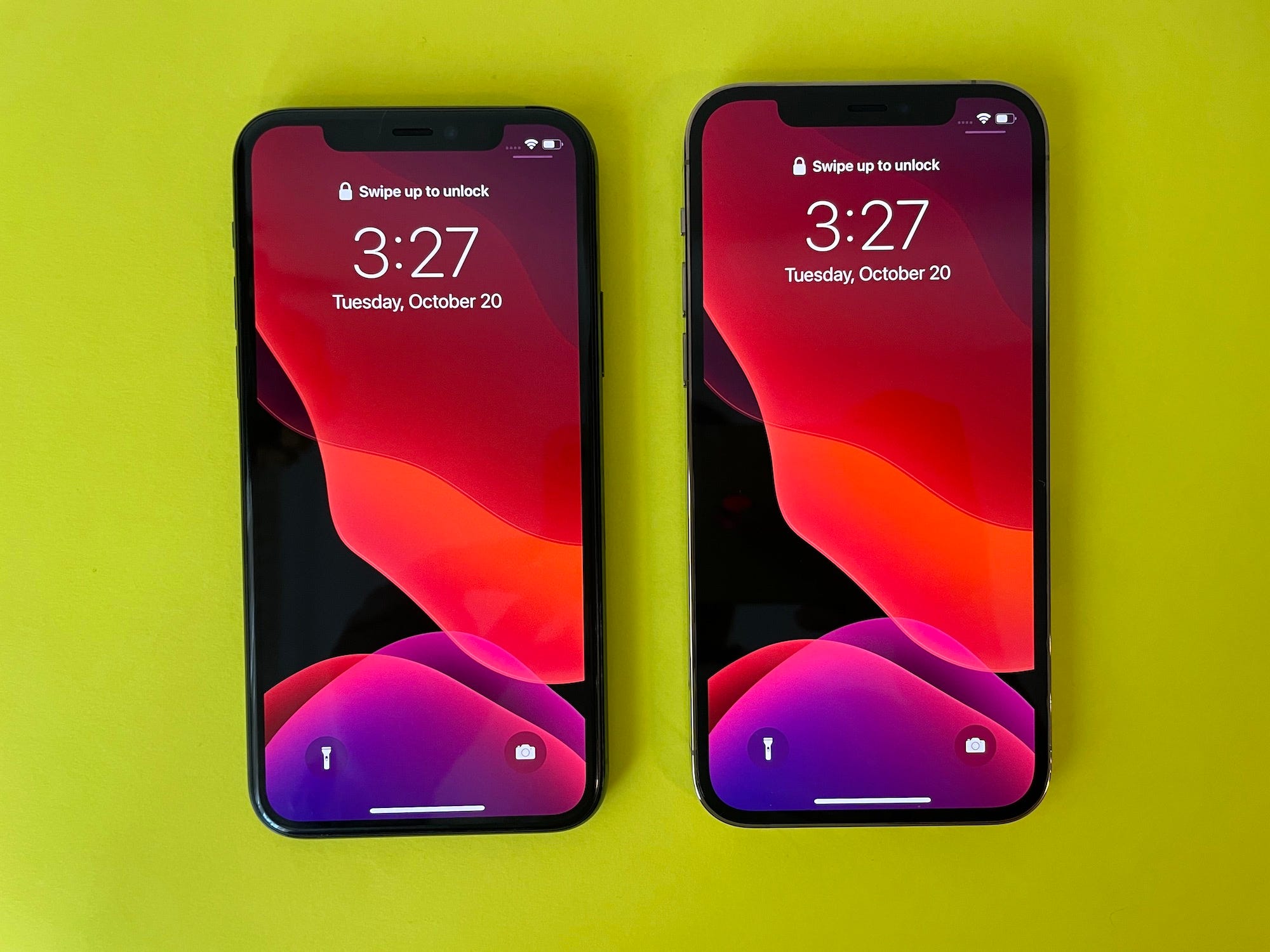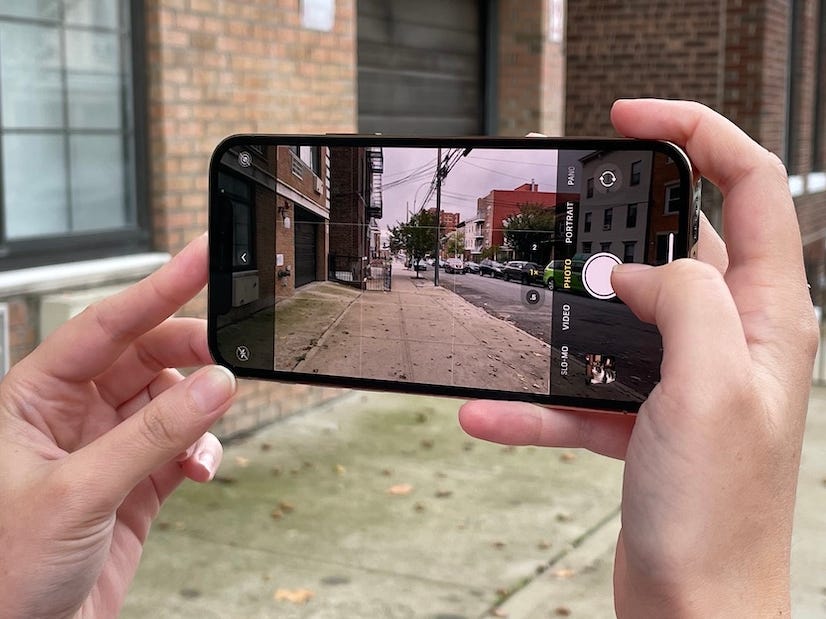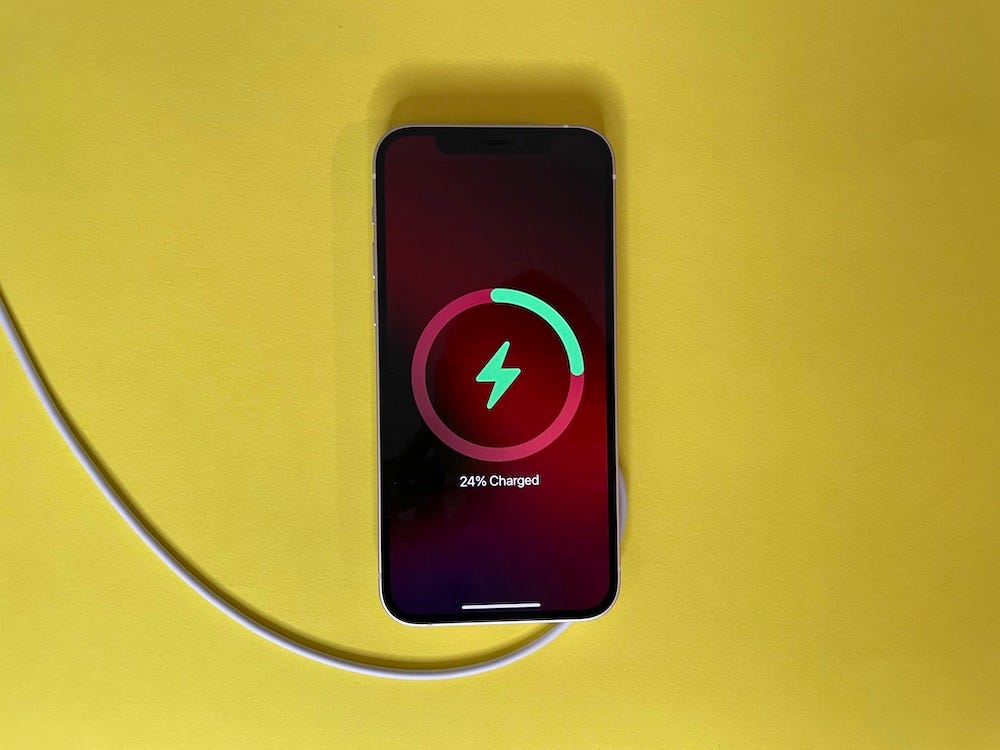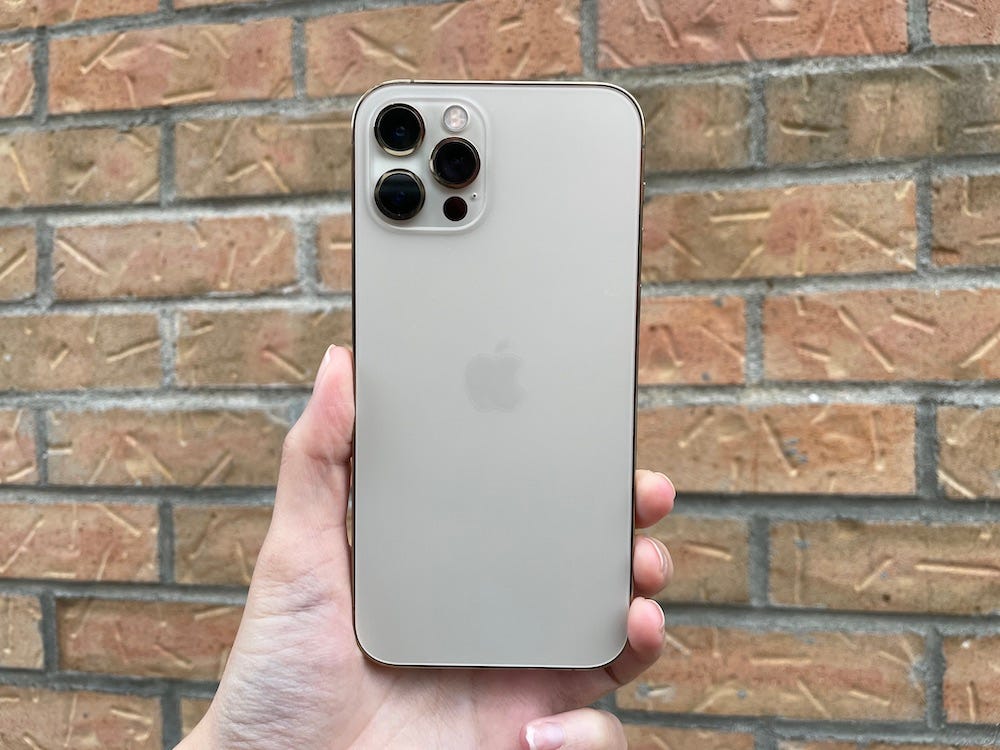- Apple’s iPhone 12 Pro has more to offer than the iPhone 12 when it comes to photography, thanks to its zoom lens and LiDAR sensor.
- The LiDAR sensor is completely new to the iPhone and enables the iPhone 12 Pro to take portrait shots even in the dark.
- Overall, the iPhone 12 Pro is the right choice for photographers that want more flexibility when shooting and editing but prefer a phone that’s cheaper and smaller than the iPhone 12 Pro Max.
Apple introduced four new iPhones on October 13 — the iPhone 12 Mini, iPhone 12, iPhone 12 Pro, and iPhone 12 Pro Max — meaning there’s more choice than ever if you’re in the market for a new iPhone.
At the core of Apple’s lineup are the $800 iPhone 12 and $1,000 iPhone 12 Pro. Like last year’s iPhone 11 Pro, the iPhone 12 Pro offers more advanced camera features than the standard model. These include an additional zoom lens that gives the iPhone 12 Pro a triple-lens camera system compared to the iPhone 12’s dual camera.
But, perhaps the biggest differentiator between the iPhone 12 Pro and the iPhone 12 is its new LiDAR sensor, which enables Apple’s pro-level iPhone to take better photos in the dark and offer faster performance when running augmented reality apps.
Across the entire iPhone lineup, Apple has added 5G support, a refreshed design, more durable screens, faster processors, and cameras that can take clearer low-light photos across all lense types — including the selfie camera. It’s these features and a few others — like a larger screen — that also differentiate the iPhone 12 Pro from its predecessor.
All told, the iPhone 12 Pro is the best choice in Apple's lineup for those who prioritize photography above all else in a smartphone, but don't want a phone that's as large (or as expensive) as the Pro Max. Here's your answer to whether the iPhone 12 Pro is the right iPhone for you.
Apple iPhone 12 Pro specifications
- Display: 6.1-inch Super Retina XDR OLED display (2,532 x 1,170 resolution)
- Processor: A14 Bionic
- Cameras: 12-megapixel triple camera with wide-angle, ultra wide-angle, and telephoto lenses
- Selfie camera: 12-megapixel
- Estimated battery life: Up to 17 hours
- Storage: 128GB, 256GB, or 512GB
- Biometric authentication: Face ID
- Network support: 5G (sub-6GHz and mmWave)
- Durability: IP68 water resistance (depth of 6 meters for up to 30 minutes); Display with ceramic shield coating for 4x drop resistance
Design and display
The iPhone is getting the biggest design overhaul it's seen in years with the iPhone 12 lineup. Marking a departure from Apple's design language over the last several years, the iPhone 12 and 12 Pro have flat metal edges that echo the design we've seen in vintage models like the iPhone 5S and earlier. Every new iPhone also has Apple's new ceramic shield coating, which the company says should make it four times as drop resistant as its predecessors.
The Pro model retains the textured matte finish Apple introduced with the iPhone 11 Pro last year and shiny stainless steel edges, which gives it a more premium feel that distinguishes it from the standard iPhone 12. The regular model has a glass back and aluminum edges by comparison.
Apple has also improved on the Pro's design this year by giving it a bigger screen without making the overall device much larger. It's done this by reducing the already slim black borders that frame the device's screen to make more room for the display.
Both the iPhone 12 and iPhone 12 Pro have Super Retina XDR OLED displays that offer sharp detail and vibrant colors. But, colors don't always look quite as vibrant on Apple's iPhones as they do on Samsung's Galaxy S20 Ultra, which has a 3,200 x 1,400 AMOLED screen.
If you're planning to upgrade from an older iPhone that has an LCD display, you'll especially notice the boost in quality on the new iPhones when watching dark scenes in TV shows or movies. That's because LCD displays can't reach a true black tone like OLED screens can through what's known as local dimming, which is why they usually offer better contrast.

The iPhone 12 Pro has the same screen as the standard iPhone 12; they're both the same size, the same resolution, and made from OLED display panels. That's great news for iPhone fans that want a slightly larger screen with better contrast without splurging on the Pro. But, it also means there's less that separates the standard Pro from the iPhone 12.
The new design certainly feels like an improvement, but Apple's new iPhones — including the Pros — are missing a few features I've really come to appreciate on Android devices. None of Apple's new iPhones have an always-on display for showing the time and other information even when the screen is asleep, for example.
And, they all lack fingerprint sensors too, which feels inconvenient considering Face ID isn't meant to work when your face is partially obstructed by a mask.
Camera

If you're thinking about choosing the iPhone 12 Pro over the standard iPhone 12, the camera should be your biggest consideration.
Of course, there are other differences between the two devices as well, such as their storage options, the colors they come in, and their finishes. But, the camera is the biggest extra perk you get from splurging on the Pro.
The iPhone 12 Pro has a 12-megapixel triple-lens camera that consists of a wide-angle lens, an ultra-wide-angle lens, and a telephoto lens. The regular iPhone 12, comparatively, has a dual camera with a wide-angle and ultra-wide-angle lens. The super-sized 6.7-inch iPhone 12 Pro Max, which launches next month, comes with a similar camera setup but offers a higher-quality zoom lens.
Here's a look at how that telephoto lens works in action. In the photos of the street sign below, you'll notice that the iPhone 12 Pro is capable of zooming in much more closely, enabling you to get a closer look at the text on the sign. It's not very sharp, but it's a much closer perspective.
The iPhone 12 Pro has a 4x optical zoom range and a 10x digital zoom range, while the iPhone 12 has a 2x optical zoom and a 5x digital zoom.
Apple iPhone 12 Pro
Apple iPhone 12
However, the Galaxy S20 Ultra offers a much closer and crisper zoom than the iPhone. Samsung's top-of-the-line phone, which similarly has a camera with three lenses and a depth sensor, can zoom up to 100x and also offers a 10x hybrid digital and optical zoom.
To be sure, the 100x zoom is almost unusable because it's often too blurry and much too difficult to focus. But, when zooming at a much lower range, the S20 Ultra can procure some pretty impressive zoom shots.
Samsung Galaxy S20 Ultra
Unlike the iPhone 12, the iPhone 12 Pro also has a LiDAR scanner that helps it detect depth by measuring how far it takes for light to reflect back from an object.
This sensor enables it to take portrait mode-style photos with a blurred background effect even in Night Mode — a feat that the regular iPhone 12 can't pull off. Apple says this LiDAR scanner should also help the iPhone 12 Pro focus faster in the dark, although I don't notice too much of a difference between the two phones in this regard.
The iPhone 12 Pro's portrait mode can take surprisingly bright and sharp photos in the dark that you would otherwise need a flash to capture on the iPhone 12. The photos below were taken on a rooftop with very little light at almost 11 p.m.
Apple iPhone 12 Pro (portrait mode in Night Mode without flash)
Apple iPhone 12 (portrait mode with flash)
It's also capable of taking a much brighter portrait in the dark compared to the Galaxy S20 Ultra. The photos below were taken in a dark room with all of the lights off and the window shade pulled down.
Apple iPhone 12 Pro
Samsung Galaxy S20 Ultra
Professional photographers will also likely be excited about Apple ProRAW, another capability exclusive to the iPhone 12 Pro and Pro Max launching later this year. This feature makes it possible for photographers to edit granular details like color, detail, and dynamic range while still allowing the iPhone to apply Apple's computational photography. All new iPhones can also shoot Dolby Vision video, although the Pro phones can do so at a higher frame rate than the regular 12.
Overall, the iPhone 12 Pro's zoom lens and LiDAR give it more flexibility when it comes to shooting in different modes and environments compared to the standard iPhone 12. It's especially well-equipped for taking photos in the dark, but Samsung has the upper hand when it comes to zoomed shots in daylight.
For a closer look at how the iPhone 12's general camera performance, check out our iPhone 12 review.
LiDAR
Apple CEO Tim Cook has vocal about the potential he sees in augmented reality for years, and now the company has finally released its first iPhone with AR hardware built-in. The iPhone 12 Pro's LiDAR sensor, which stands for Light Detection and Ranging, gives the iPhone better spatial awareness since it can measure depth — making it more adept at placing objects accurately in your virtual surroundings when running AR apps.
I noticed this most when using digital measurement apps like Apple's Measure app, which as its name implies is a digital tape measure. The iPhone 12 Pro was dramatically faster than the iPhone 12 when it came to finding and measuring surfaces. Using the iPhone 12 Pro, all I had to do was point my iPhone at a nearby table or chair and the marker would fixate on the surface immediately. The iPhone 12, however, was much slower to pinpoint surfaces around the home.
This discrepancy is less noticeable in storytelling apps like the My Very Hungry Caterpillar AR app, which is based on the famous children's book by Eric Carle. But, I could see the LiDAR sensor being useful if you regularly need to take measurements for either your job or a hobby.
Even so, AR performance isn't a main selling point just yet. Although AR apps do open up some interesting new use cases for smartphones, there hasn't really been a breakout hit in the category since Pokémon Go launched in 2016. For now, the biggest benefit you'll likely notice from using LiDAR is its ability to enable portrait mode photos at night.
5G
Major carriers in the United States like Verizon, T-Mobile, and AT&T have launched nationwide 5G networks, but don't expect a massive bump in speed right away.
The most common form of 5G that you're likely to experience when unboxing a new iPhone 12 isn't all that much faster than 4G LTE at the moment. Super-fast millimeter wave networks are still only found in small corners of the country in specific outdoor zones.
In my experience, the speeds I experienced on Verizon's nationwide non-millimeter wave network were only incrementally faster than 4G LTE. That falls in line with comments made by Verizon Communications CEO Hans Vestberg earlier this year, who said at a conference earlier this year that customers will likely only see a small upgrade at first.
On an iPhone 12 connected to Verizon's 5G network, I achieved an average download speed of 109.3 megabits per second (Mbps) and average upload speeds of 34.4 Mbps on the iPhone 12 when testing my connection using the app Speedtest.net.
An iPhone 11 Pro running on Verizon's 4G LTE network saw an average download speed of 106.4 Mbps and average upload speed of 21.4 Mbps during the same test.
MagSafe accessories and battery life

Another standout feature coming to the iPhone 12 lineup is compatibility with Apple's new MagSafe accessories, which as the name implies uses a magnetic system to snap on to the back of your iPhone seamlessly.
Among the first accessories Apple is launching are a wireless iPhone charger, a wireless charger meant to charge your iPhone and Apple Watch at the same time, and a wallet that sticks to the back of your iPhone.
The MagSafe wireless charger for the iPhone feels like an enlarged Apple Watch charger for your phone. When attaching it, your phone will make a sound to confirm its charging and display a graphic showing your battery level just like on the Apple Watch.
Third-party accessory makers will be able to create MagSafe add-ons as well, so it'll be interesting to see what types of new accessories are designed for the iPhone moving forward.
The iPhone 12 Pro can last for a full day on a single charge, living up to Apple's claims of 17-hour battery life. After almost 16 hours of use, the iPhone 12 Pro had 13% of its battery left. I'm usually able to get a little more than a day's worth of use out of high-end smartphones, but I was also using more battery-intensive AR apps during the course of my testing.
The bottom line
When it comes to Apple's new smartphone line, the iPhone 12 Pro is the best choice for photographers that rely heavily on their phones for shooting and editing but still want a relatively compact phone. Unless you're using your phone for some serious photography — more than just casually taking photos of pets, vacations, and food — you'll get by just fine with the iPhone 12.
If you fit this description and are currently using an iPhone X or earlier "Plus" iPhone, it's worth considering the upgrade. Owners of older iPhones will likely notice and appreciate the jump to a faster processor and longer battery life — in addition to the other improvements the new iPhone has to offer — more than those using a more recent model. An upgrade is usually only worth it if you're looking for more than just new photography features, which on their own don't typically justify spending a purchase that costs hundreds of dollars.
But, don't consider upgrading to the new iPhone just for 5G — at least not yet. Today's widely deployed networks are roughly on par with 4G LTE, so there's no rush to upgrade to a 5G device. That said, if you're already planning to upgrade for other reasons, buying a 5G phone ensures that it'll still be relevant for years to come when 5G networks are likely to be much improved.
Pros: Excellent camera especially in low-light; Elegant new design that's easier to hold; LiDAR enables portrait mode photos even in the dark; 5G will keep the iPhone 12 Pro relevant for years to come
Cons: Zoom isn't as crisp as Samsung's; Widely-deployed 5G networks aren't much faster than 4G LTE; No fingerprint sensor; No always-on display

